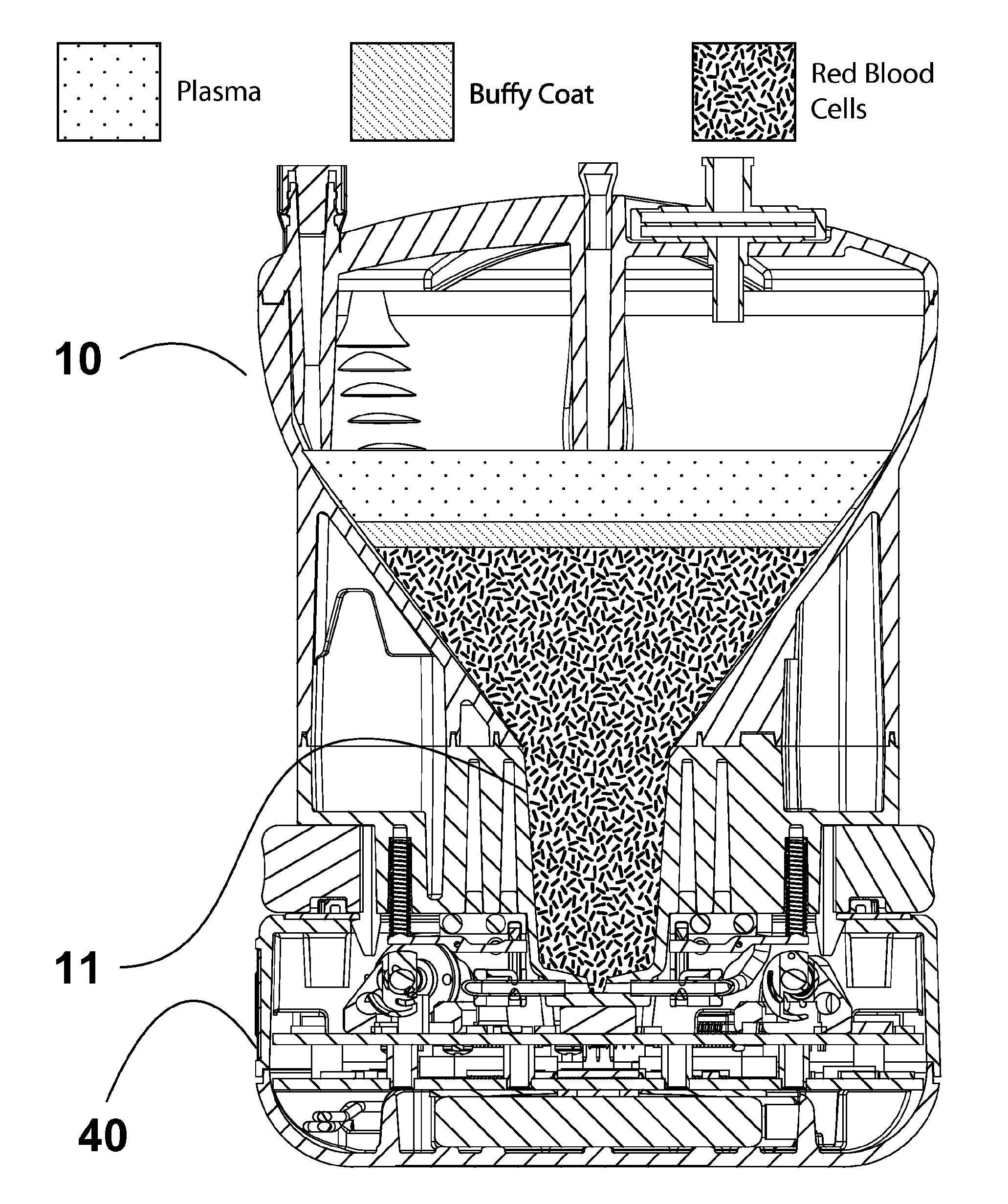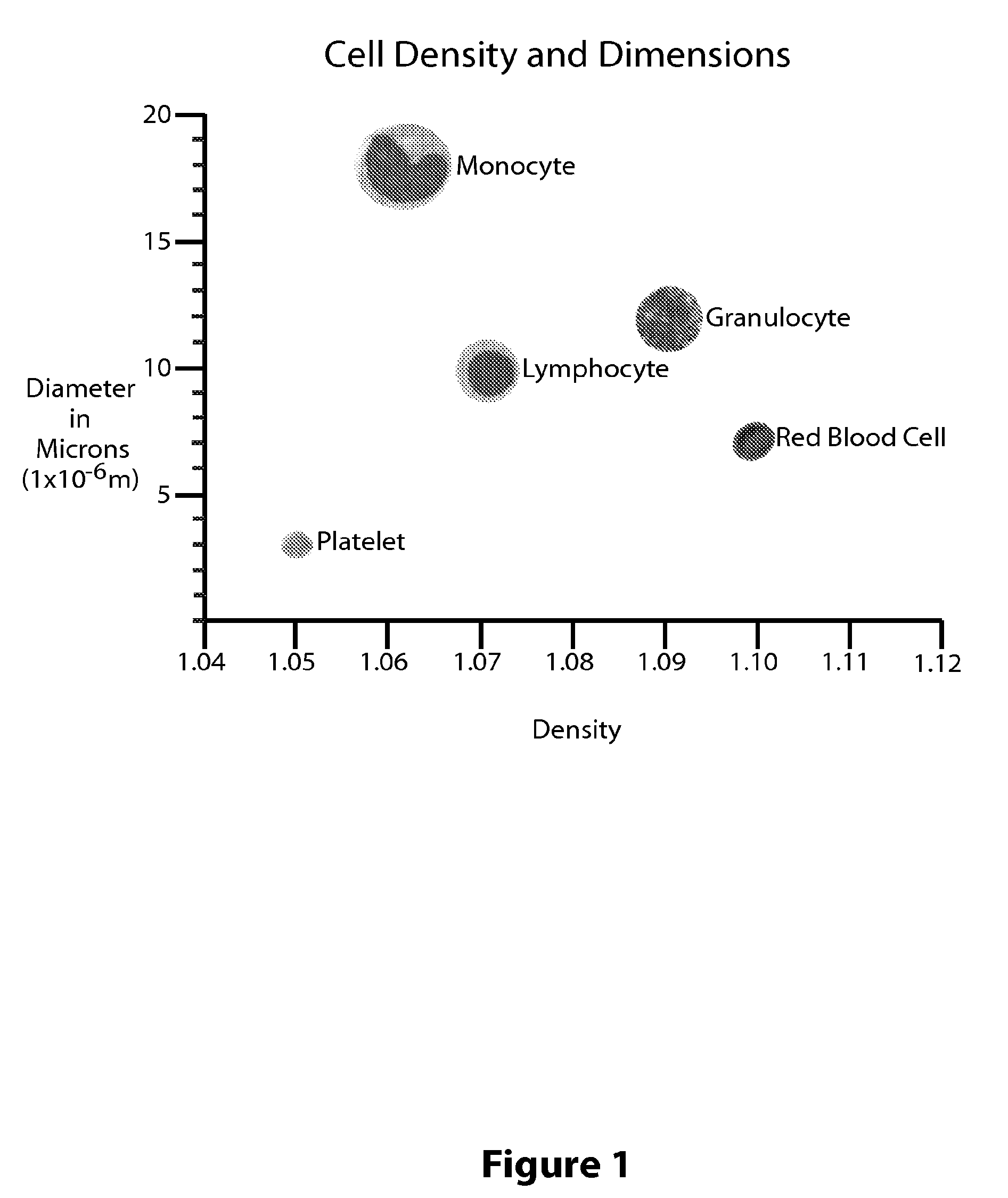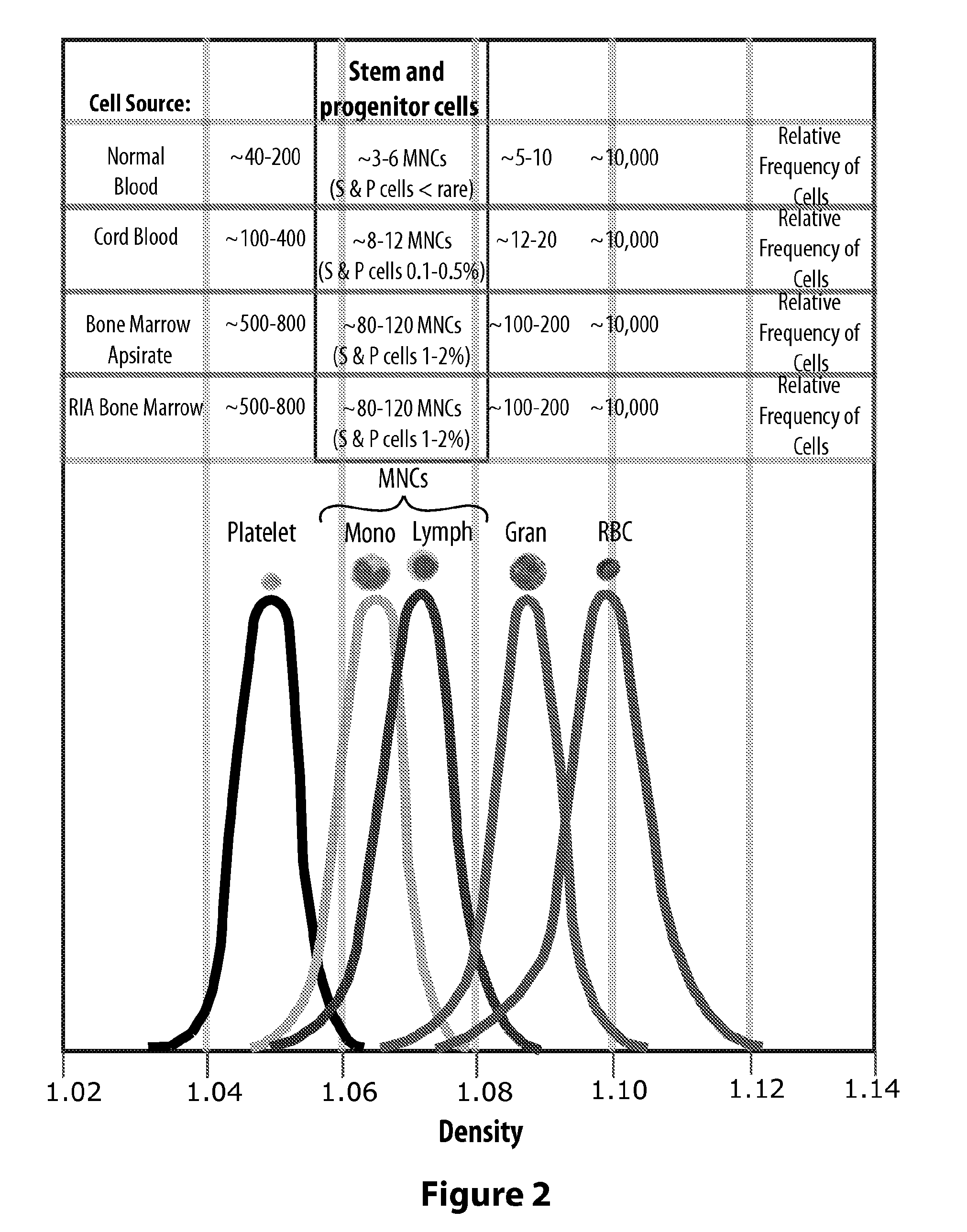While creating the stratified cell layers generally requires nothing more than the application of high G forces over a set amount of time, precisely removing a specific layer of cells is problematic.
Because of the scarcity of these WBCs and their residence within liquid solutions populated by enormous numbers of RBCs, current methods to isolate WBCs are (A) labor and time intensive, requiring excellent laboratory technique, (B) typically cannot be accomplished in a sterile environment, (C) typically have only between a 50-75% efficiency rate in capturing WBCs (a loss of 25% to 50% of the WBCs), and (D) involve processes that may adversely affect cell function.
Given the typically small size of blood samples and the fact that SPCs are exceedingly rare in normal blood, there may be no SPCs at all in a typical harvest of the WBCs from normal blood and, although SPCs are more numerous in cord blood than in normal blood, they are still rare in cord blood.
Although several semi-automated systems for harvesting WBCs from whole blood are currently being marketed, their advantage in cell recovery efficiency relative to manual methods is not significant, and their market penetration is small.
These methods typically require 1½ to 2 hours to perform, and even with best practices, recovery of MNCs is often less than 60%.
Thus the manual methods commonly employed for isolating and capturing MNCs within a blood sample are less than optimal in terms of precision and speed because of numerous limitations in this technology.
Typically, this migration of the cell populations to their final positions occurs during an acceleration and duration that are both fixed, and thus rarely optimal for an individual blood sample.
Essentially the WBC or MNC harvesting efficiency of both density gradient technologies is limited by the need to aim at the center of the gap between the median density bell curves of the granulocytes and the lymphocytes (i.e., 1.08), as mentioned above with regard to FIG. 2.
This simplistic approach also does not accommodate the fact that even in normally healthy people, there exists significant variation in the number and density of cells of each type and the sedimentation rates among samples may differ by as much as an order of magnitude.
Consequently, these primitive WBC or MNC isolation technologies are rarely optimal for any specific sample of blood.
Further, as the acceleration and duration of the centrifuge is programmed at the start of the run, a duration that is satisfactory to relocate all the cells within a specific sample may be insufficient for many other blood samples in that most of the RBCs may not have arrived at the bottom of the tube and thus many of the target WBCs may not have been buoyed up to the “buffy-coat” strata by the ascending plasma.
As this process takes place in a closed centrifuge within a rapidly spinning rotor, the operator is unable to observe the actual motion of the cells.
A further drawback to density gradient mediums is that they require buffers, which occupy most of the volume of a given harvest tube, minimizing the volume of blood from which WBCs are to be harvested.
Additionally, in order to achieve adequate purity from contaminants in the final WBC population, the granular density gradient mediums and the buffers will need to be washed out, inevitably causing a further loss of target cells.
A third drawback to the density gradient based blood separation methods described above is that the parallel vertical walls of a density gradient harvest tube do not assist the WBCs rising during centrifugation to lie atop the RBCs.
A fourth drawback to the density gradient based separation methods is the constant large cross sectional area of the density gradient harvest test tube at the location where the MNCs are harvested manually at 1 G.
Consequently, no amount of care during this manual suction process prevents the roiling of the MNC / PLT layer and the density gradient media so a loss of MNCs and substantial contamination of the cells by the density gradient granules ensues.
A fifth drawback to conventional density gradient granule based systems is due to the direct contact between the density gradient granules and the cells.
The extensive direct contact between these granules and the cells to be harvested has been reported to damage the cell function due to a form of toxicity.
A sixth drawback of conventional blood separation methods, with or without density gradient granules, is the probability that significant numbers of RBCs may remain in the final product due to the variability in technician competence and the ease of inadvertently remixing the cells at 1 G. Several recent studies have highlighted the importance of minimizing RBC contamination because such contamination decreases the efficacy of medical treatments using these MNCs.
The few commercially available systems that have automated this cell separation and depletion process (such as the Hemonetics V50, the Cobe Spectra, the Sepax System by Biosafe SA of Switzerland, and the Thermogenesis AXP by Thermogenesis Corp. of California) also have substantial drawbacks and have not achieved improved recoveries of purified WBCs relative to the conventional manual means.
An additional drawback is that these commercially available automated systems require expensive capital equipment in order to operate.
These automated devices cost tens of thousands of dollars and occupy substantial laboratory space if significant production of units of purified WBCs are required—such as with cord blood stem cell banks that may process 40 to 200 units per day. FIG. 10 illustrates the costs of processing four units of blood with two prior art systems and with the current system.
A second drawback of the currently commercially available automated systems is that they require complicated, expensive, difficult to manufacture single use disposable bag sets linked together with substantial tubing to process the cells, as shown in FIG. 11.
These prior art bag sets are complex and costly to manufacture.
 Login to View More
Login to View More 


